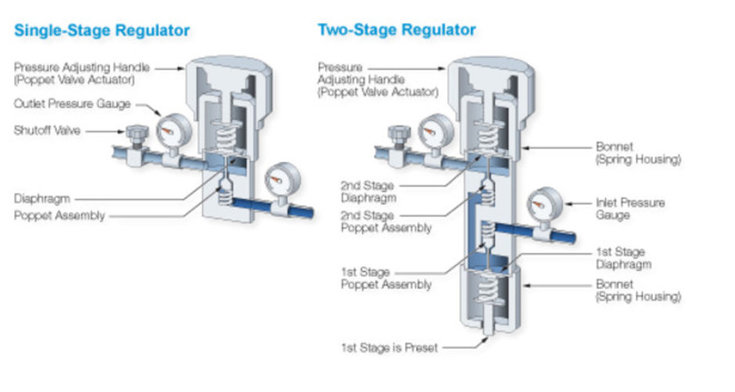Single-Stage versus Two-Stage Regulators
A pressure reduction regulator is the safest means to reduce cylinder pressure to a workable level for operating equipment and instruments. Single-stage gas pressure regulators reduce cylinder pressure to delivery or outlet pressure in one step. Two-stage gas pressure regulators reduce cylinder pressure in two steps.
Since mechanical characteristics influence the performance of each regulator, the choice depends on requirements. The two most important variables are droop and supply pressure effect. Droop is the difference in delivery pressure between zero flow conditions and the regulator’s maximum flow capacity. Supply pressure effect is the variation in delivery pressure. Supply pressure decreases while the cylinder empties.
Single-stage and two-stage regulators have different droop characteristics and respond differently to changing supply pressure. The single-stage regulator shows little droop with varying flow rates, but a relatively large supply pressure effect. Conversely, the two-stage regulator shows a considerable droop, but only small supply pressure effects. A single-stage regulator is recommended where inlet pressure does not vary greatly or where periodic readjustment of delivery pressure does not present a problem. A two-stage regulator, however, provides constant delivery pressure with no need for periodic readjustment.

